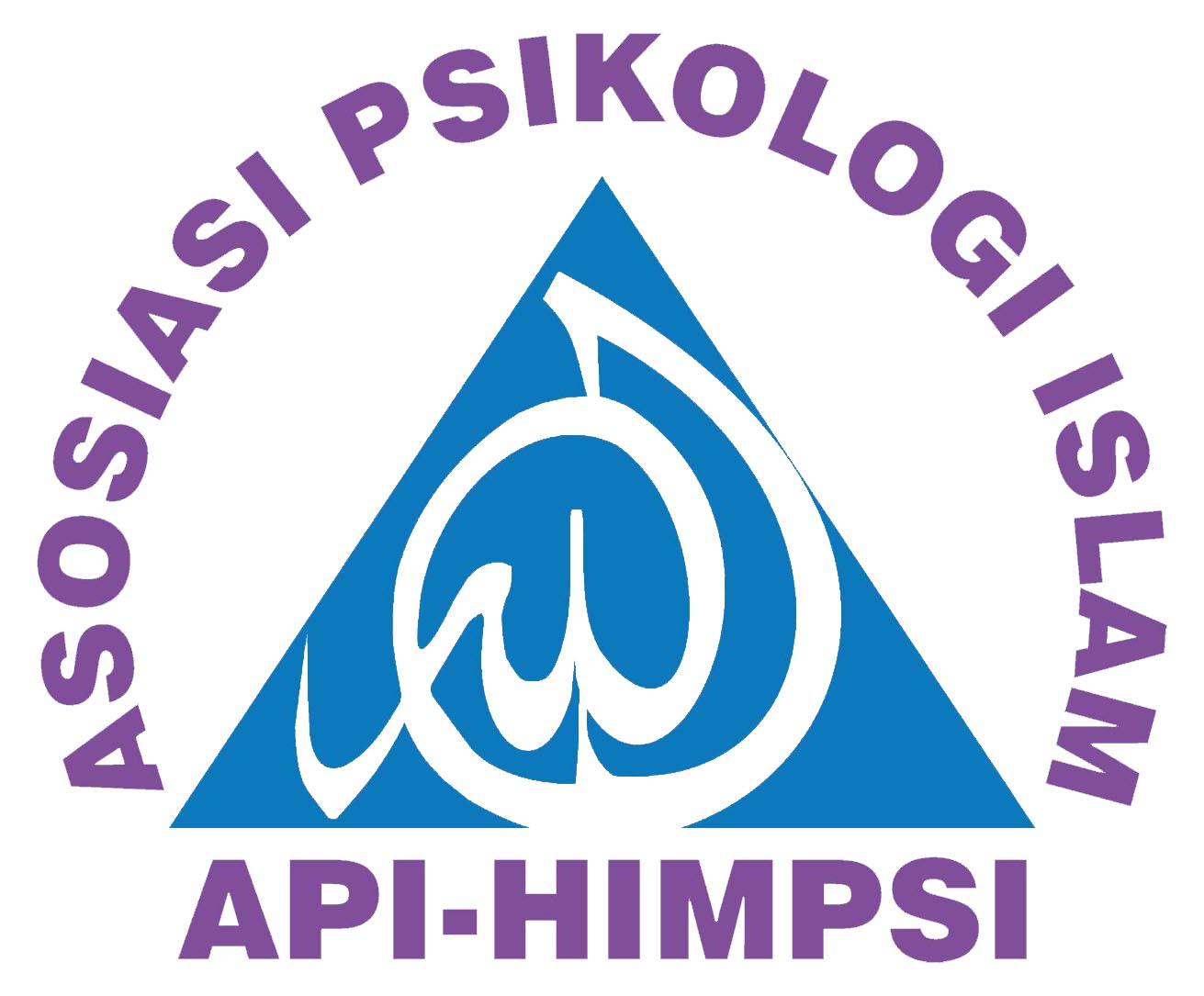Bisakah Angklung menjadi Instrumen Psikoedukatif? Studi Eksploratif pada Pemain Angklung
DOI:
https://doi.org/10.15575/jpib.v2i2.5574Keywords:
Angklung, Sunda, Psikoedukasi, Kompetensi Psikososial, ReligiusitasAbstract
References
Andersen, S. M., & Chen, S. (2002). The relational self: An interpersonal social-cognitive theory. Psychological Review, 109(4), 619-645.
Arnold, K. H., & Muller, C. L. (2012). Assessment and development of social competence: Introduction to the special issue. Journal for educational research online, 4(1), 7-19.
Bandura, A. (1982). Self-efficacy mechanism in human agency. American Psychologist, 37(2), 122-147.
Braun, V., & Clarke, V. (2006). Using thematic analysis in psychology. Qualitative Research in Psychology, 3, 77-101.
Budi, D. S., Soedarsono, H. T., & Narawati, T. (2014). Angklung dogdog lojor pada upacara seren taun. Resital, 15(2), 139-151.
Depag. (1984). Al Qur'an dan terjemahnya. Jakarta: Departemen Agama Republik Indonesia.
Effendi, N. (2015). Pemahaman dan pembentukan karakter masyarakat: Realitas dan pandangan antropologi. TINGKAP: Interdisciplinary journal of social sciences and social studies, 11(2), 175-185.
Eisenberg, N., Spinrad, T. L., & Knafo-Noam, A. (2015). Prosocial development. Dalam W. Damon, Handbook of child psychology and developmental science (7th ed., pp. 610-656). Wiley Online Library.
Gergen, K. J. (2014). Pursuing excellence in qualitative inquiry. Qualitative Psychology, I(1), 49-60.
Goleman, D. (2006). Social intelligence: The new science of human relationship (1st ed.). New York, CA, United States of America: Bantam Dell: A division of Random House, Inc.
Hafiz, S. E. (2018). Pendahuluan. Dalam A. Pitaloka, Z. Abidin, & N. M. Milla, Psikologi sosial: Pengantar dalam teori dan penelitian (pp. 1-19). Jakarta: Penerbit Salemba Humanika.
Jaenudin, U., & Tahrir, T. (2019). Studi religiusitas, budaya Sunda, dan perilaku moral pada masyarakat Kabupaten Bandung. Jurnal Psikologi Islam dan Budaya, 2(1), 1–8. doi.org/10.15575/jpib.v2i1.3445
Keller, H. (2017). Culture and development - A systematic relationship. Perspective on Psychological Science, 12(5), 833-840.
Madill, A., & Gough, B. (2008). Qualitative research and its place in psychological science. Psychological Methods, 13(3), 254-271.
Markova, I., & Jahoda, A. (2018). Across culture, mind and history. Culture & Psychology, 24(3), 265-281.
Markus, H., & Kitayama, S. (2003). Culture and the self. Implication for cognition, emotion, and motivation. Dalam M. A. Hogg, Social Psychology (Vol. IV). London: SAGE Publications.
Musthofa, B. M. (2018). Transformasi angklung Sunda dan dampaknya bagi masyarakat: Studi kasus kreativitas angklung di Saung Angklung Udjo. Seminar Nasional Teknologi Terapan berbasis Kearifan Lokal (SNT2BKL). 1, pp. 546-554. Kendari: Program Pendidikan Vokasi Universitas Halu Oleo.
Ninin, R. H. (2015). The self of Sundanese ethnic: Interdependent construal and religious self. Asian Social Science, 11(16), 1-8.
Ninin, R. H., Iskandar, Tb. Z., Sumintardja, E. N., & Siswadi, A. G. P. (2018). Diri religius: Suatu model konseptual tentang diri (Religious self: A conceptual model of self). Journal of Psychological Science and Profesion, 2(1), 114-126.
Noviyanti, S. R., & Sutiyono. (2017). Bentuk, perubahan fungsi, dan nilai-nilai edukatif pada musik tari Japin Tahtul di Amuntai. Imaji: Jurnal Seni dan Pendidikan Seni, 15(1), 1-8.
Nugraheni, W. (2018). Penanaman nilai-nilai moral melalui kesenian Reog Kendang terhadap pelajar di Kabupaten Tulungagung. Imaji: Jurnal Seni dan Pendidikan Seni, 16(2), 162-171.
Prabowo, W., Yusuf, M., & Setyowati, R. (2019). Pengambilan keputusan menentukan jurusan kuliah ditinjau dari student self efficacy dan persepsi terhadap harapan orang tua. Jurnal Psikologi Pendidikan & Konseling: Jurnal Kajian Psikologi Pendidikan dan Bimbingan Konseling, 5(1), 42-48.
Pradoko, S., & Priyanto, W. P. (2016). Rancang bangun musik angklung model SATB, dasar aransemen model orchestra. Imaji: Jurnal Seni dan Pendidikan Seni, 14(1), 90-97.
Pradoko, S., Diah, F. X., & Silaen, H. (2017). Rancang bangun musik angklung model electone organ perpaduan kombinasi bas, harmoni, dan melodi. Imaji: Jurnal Seni dan Pendidikan Seni, 15(1), 1-8.
Pradoko, S., Rusdewanti, P. P., & Fu'adi. (2018). Angklung piano dengan penggerak motor elektrik. Imaji: Jurnal Seni dan Pendidikan Seni, 16(2), 118-127.
Priatama, R. P., Supenawinata, A., & Hidayat, I. N. (2019). Makna hidup dibalik seni tradisional: Studi fenomenologi kebermaknaan hidup seniman Sunda. Jurnal Psikologi Islam dan Budaya, 2(1), 43-64.
Putri, D. R. (2012). Pembelajaran angklung menggunakan metode belajar sambil bermain. Harmonia: Journal of Arts Research and Education, 12(2), 116-124.
Rachmi, F. N. (2019). Implementasi komunikasi budaya kontemporer pada experiential marketing saung angklung Udjo. Dalam M. F. Juddi, U. L. Khadijah, R. K. Anwar, & A. Rusmana (Eds.), Komunikasi budaya dan dokumentasi kontemporer (1 ed., pp. 152-158). Bandung, Jawa Barat, Indonesia: Unpad Press.
Rosydiana, E. (2017). Meningkatkan kecerdasan musik melalui permainan angklung di PAUD Aulia. Yaa Bunayya: Jurnal Pendidikan Anak Usia Dini, 1(2), 53-64.
Rustika, I. (2012). Efikasi diri: Tinjauan teori Albert Bandura. Buletin Psikologi, 20(1-2), 18-25.
Slife, B. D., & Richardson, F. C. (2010). Review of relational being: Beyond self and community. The Journal of Social Psychology, 150(2), 226-230.
Smith, P. B. (2013). Through a glass darkly: Viewing the social contexts of our behavior. Asian Journal of Social Psychology, 16, 19-21.
Sunarto. (2016). Filsafat seni nusantara. Imaji: Jurnal Seni dan Pendidikan Seni, 14(1), 81-89.
Sunawan, Yani, S. Y., Kencana, T. I., Anna, C. T., & Mulawarman, S. A. (2017). Dampak efikasi diri terhadap beban kognitif dalam pembelajaran matematika dengan emosi akademik sebagai mediator. Jurnal Psikologi, 44(1), 28-38.
Wertz, F. J. (2014). Qualitative inquiry in the history of psychology. Qualitative Psychology, 1(1), 4-16.
Downloads
Additional Files
Published
Issue
Section
Citation Check
License
Authors who publish with this journal agree to the following terms:
- Authors retain copyright and grant the journal right of first publication with the work simultaneously licensed under a Creative Commons Attribution License that allows others to share the work with an acknowledgment of the work's authorship and initial publication in this journal.
- Authors are able to enter into separate, additional contractual arrangements for the non-exclusive distribution of the journal's published version of the work (e.g., post it to an institutional repository or publish it in a book), with an acknowledgment of its initial publication in this journal.
- Authors are permitted and encouraged to post their work online (e.g., in institutional repositories or on their website) prior to and during the submission process, as it can lead to productive exchanges, as well as earlier and greater citation of published work (See The Effect of Open Access).






